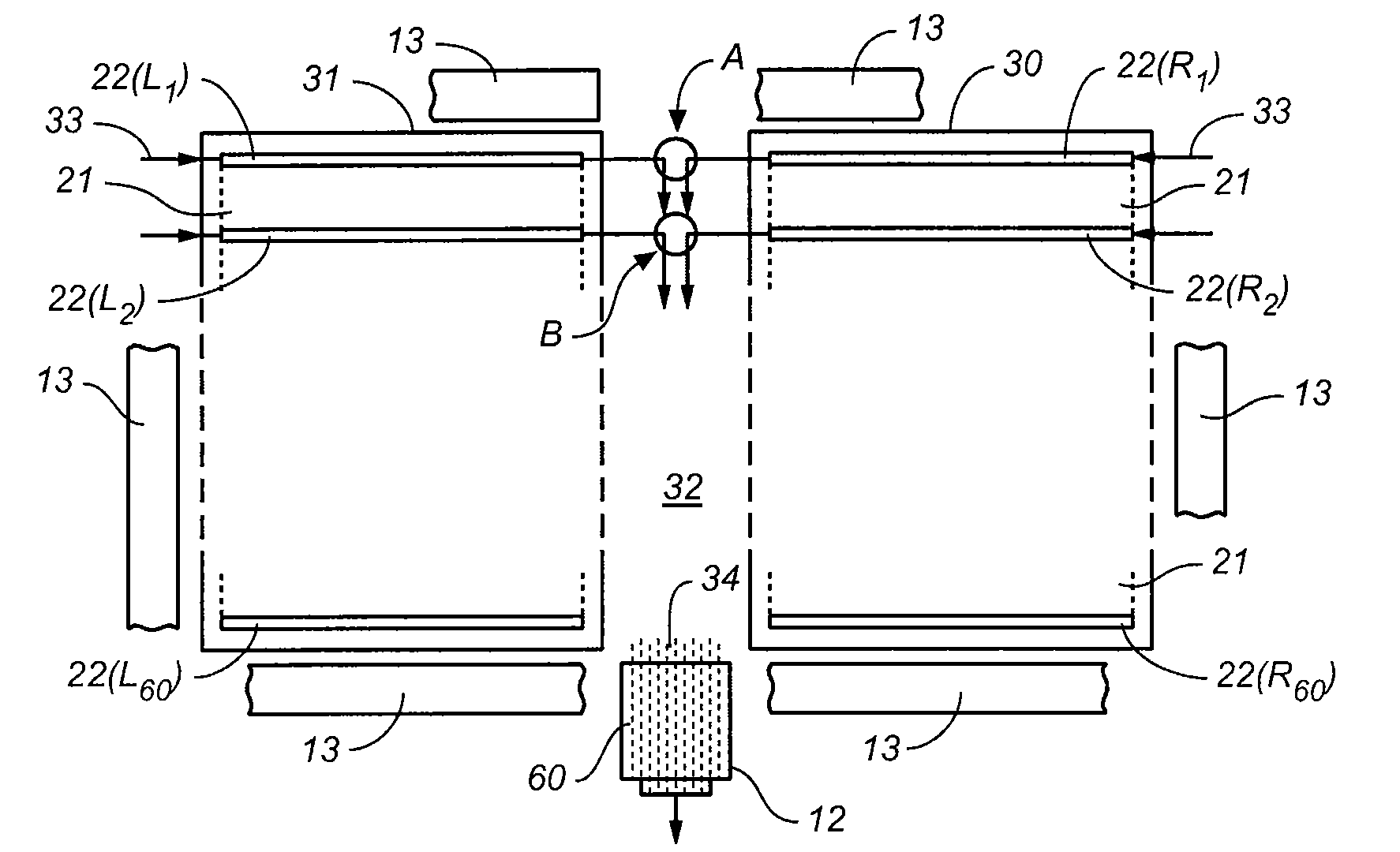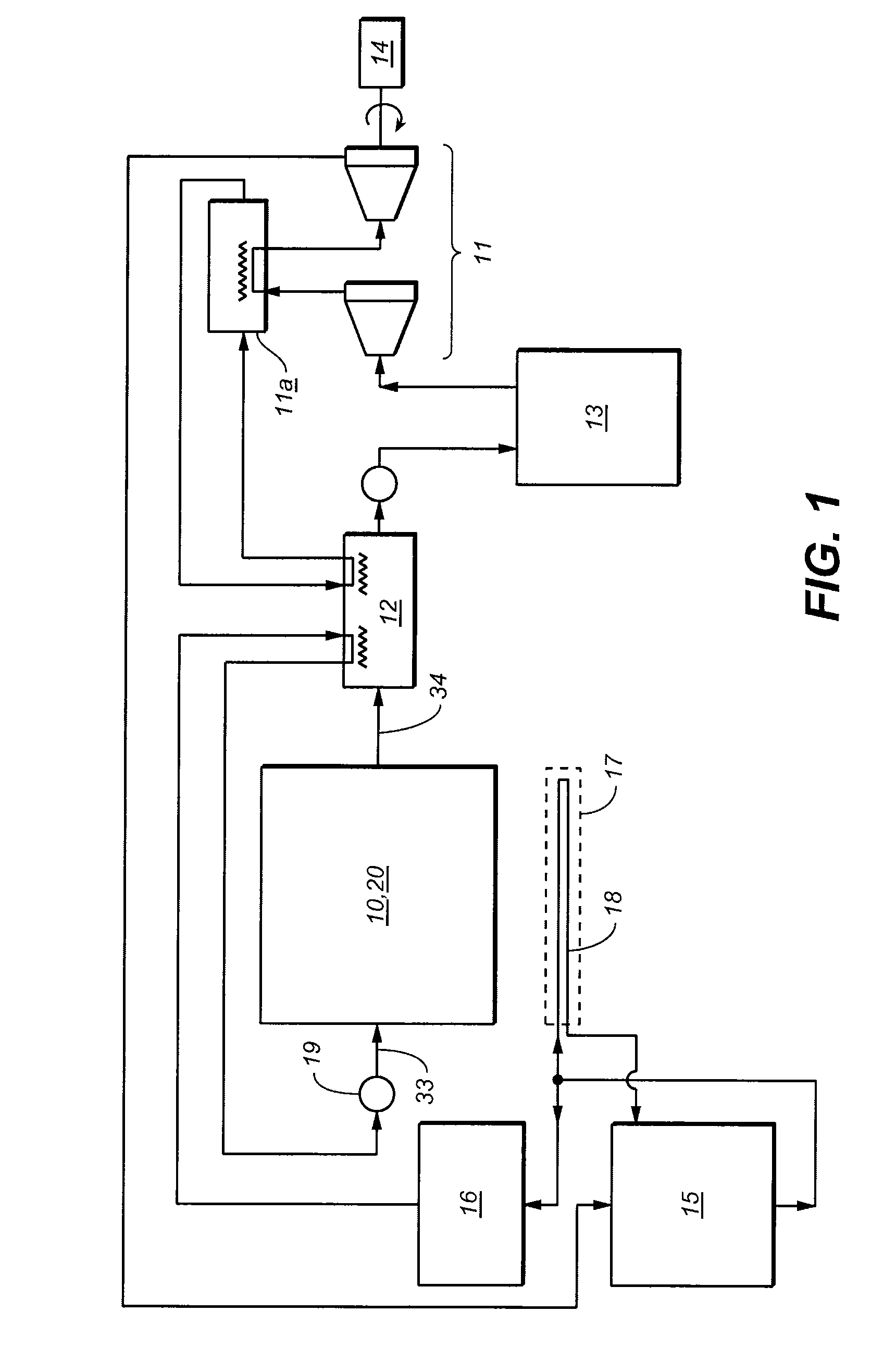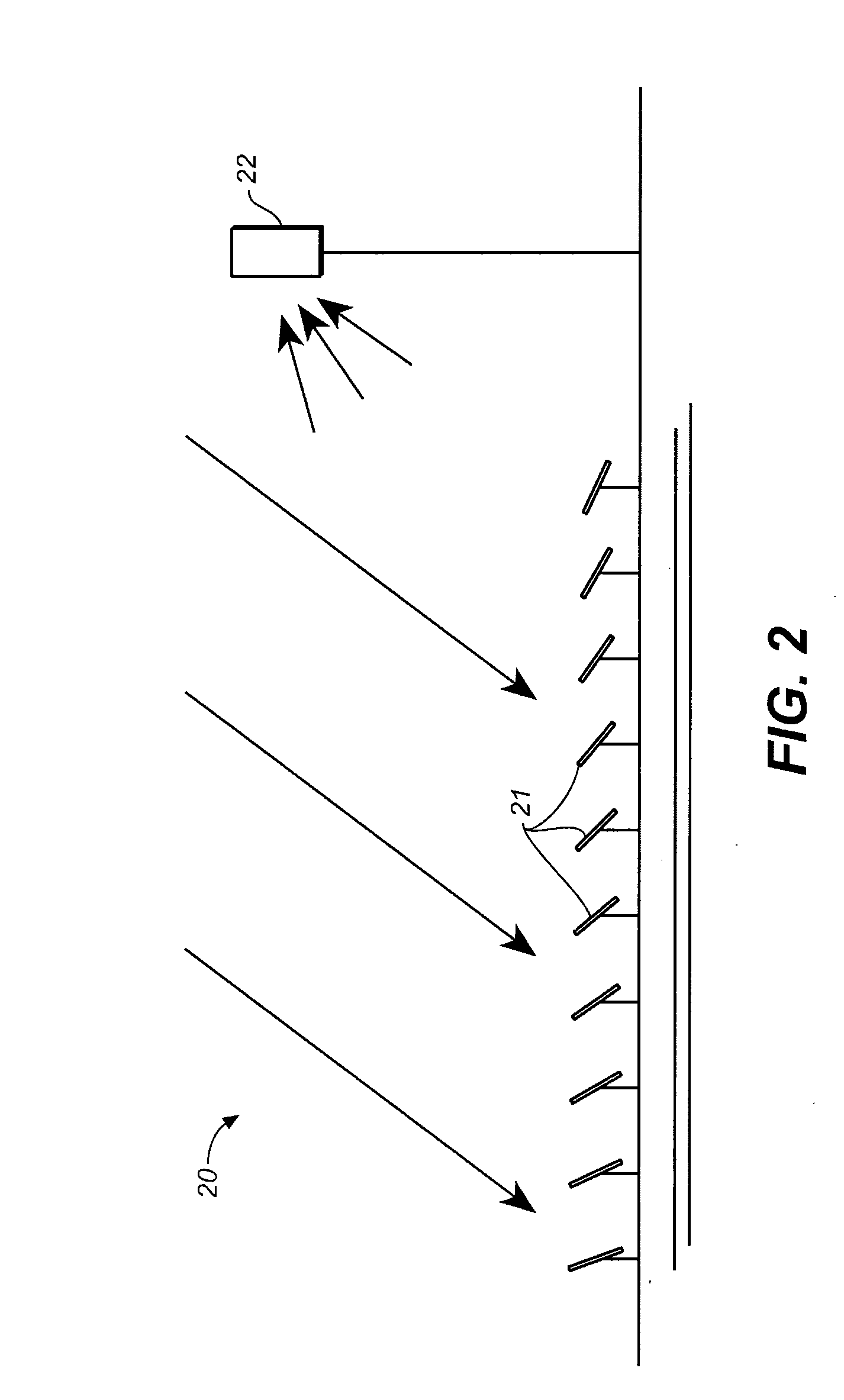Granular thermal energy storage mediums and devices for thermal energy storage systems
a technology of thermal energy storage and granular thermal energy, which is applied in the direction of steam engine plants, machines/engines, collectors with underground reservoirs, etc., can solve the problems of disproportionately high fabrication and material costs, imposing formidable construction and cost constraints, and reducing the volumetric capacity of the vessel. achieve the effect of round the clock supply
- Summary
- Abstract
- Description
- Claims
- Application Information
AI Technical Summary
Benefits of technology
Problems solved by technology
Method used
Image
Examples
example
[0142]The conductivity of topsoil from Carrizo Plains was measured. The soil was alluvium formed from quartzite, basalt and shale. At low temperature (approx 50° C.) the surface soil conductivity was 0.34 W / (m·K). Surprisingly, the conductivity at 250° C. was greater, 0.49 W / (m·K).
[0143]A mixture of 21% Carrizo Plains topsoil plus 79% quartzite rounded pebbles of nominal size 38 mm (one and a half inch) resulted in a conductivity of 0.78 W / (m·K) at 250° C.
PUM
 Login to View More
Login to View More Abstract
Description
Claims
Application Information
 Login to View More
Login to View More - R&D
- Intellectual Property
- Life Sciences
- Materials
- Tech Scout
- Unparalleled Data Quality
- Higher Quality Content
- 60% Fewer Hallucinations
Browse by: Latest US Patents, China's latest patents, Technical Efficacy Thesaurus, Application Domain, Technology Topic, Popular Technical Reports.
© 2025 PatSnap. All rights reserved.Legal|Privacy policy|Modern Slavery Act Transparency Statement|Sitemap|About US| Contact US: help@patsnap.com



